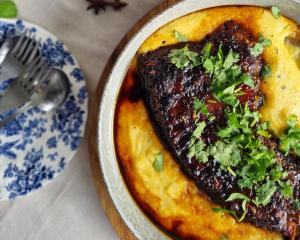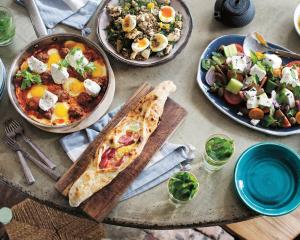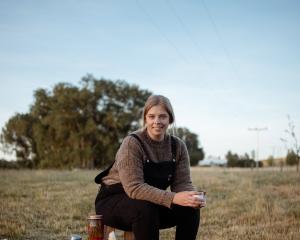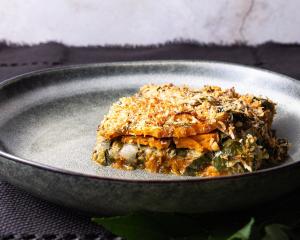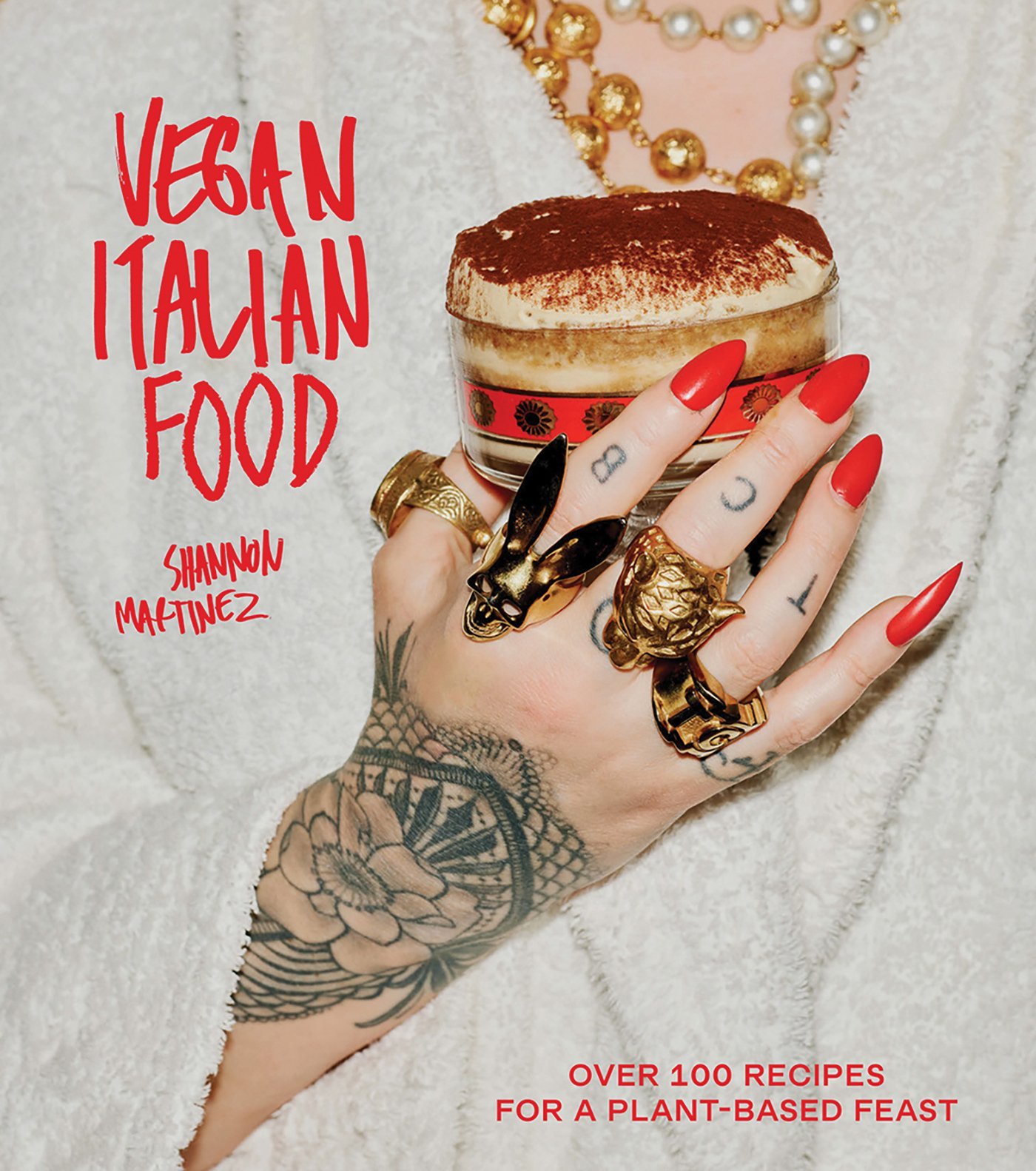
It is a philosophy rooted in all cuisines rooted in peasant food, she says.
"You cook with what is abundantly available, in the most delicious way possible and bulk it out with carbs."
A first generation Spanish-Australian, Martinez grew up in 1980s Melbourne where many different immigrants lived, shopped and socialised in the same areas and cooked together.
She has gone on to run Australia’s most prolific plant-based business Smith and Daughters and Smith and Deli. Her success, she says, is based on replicating the flavours and textures of meat, rather than serving bland, predictable vegan fare.
"I love buying fruit and vegetables that have to be processed today or they’ll be spoiled tomorrow, at a fraction of the cost (or even free) and locking in all the flavour and nutrients at the optimum point of eating."
Another benefit to Martinez, who has been guest chef on Masterchef and My Kitchen Rules, of this style of cooking is that it is already vegan — accidentally vegan.
"It’s no secret that I am not vegan, but I still eat a plant-based diet 95% of the time. This is the type of vegan food I love to eat: dried beans, pulses and legumes cooked to a pulp, infused with aromatics and wiped up with soft, crusty bread.

Martinez, who fought cancer twice while writing her latest cookbook Vegan Italian Food, has focused on dishes that already exist in Italian cuisine that do not require veganising but has also included some of her customers’ favourite veganised dishes.
"Before I hear an Italian say I’ve made their ancestors roll over in their graves from my recipes, the nature of veganising these dishes will always inevitably be inauthentic. What I can guarantee is, if you feed them to your nonna, she won’t be able to tell the difference."
She is also unapologetic about her generous use of oil — "it really does give dishes body and carry flavour" — and her generous portion sizing.
"I write recipes as if I am feeding my own family. These are Martinez portions."
Martinez, who has cooked for vegan celebrities such as Kourtney Kardashian, Travis Barker, Billie Eilish and Cyndi Lauper, also includes a "cooking 101" chapter to pass on the lessons she learnt cooking with her grandma on Sundays such as how to cook dried legumes, pulses and mushrooms, while her "building block chapter" teaches you how to process a glut of produce to make your existence "infinitely more delicious".
Note: these recipes use 20ml tablespoons (NZ 15ml).
The book
This is an edited extract from Vegan Italian Food: Over 100 Recipes for a Plant-based Feast by Shannon Martinez, published by Hardie Grant Books. Photography by Kristoffer Paulsen.
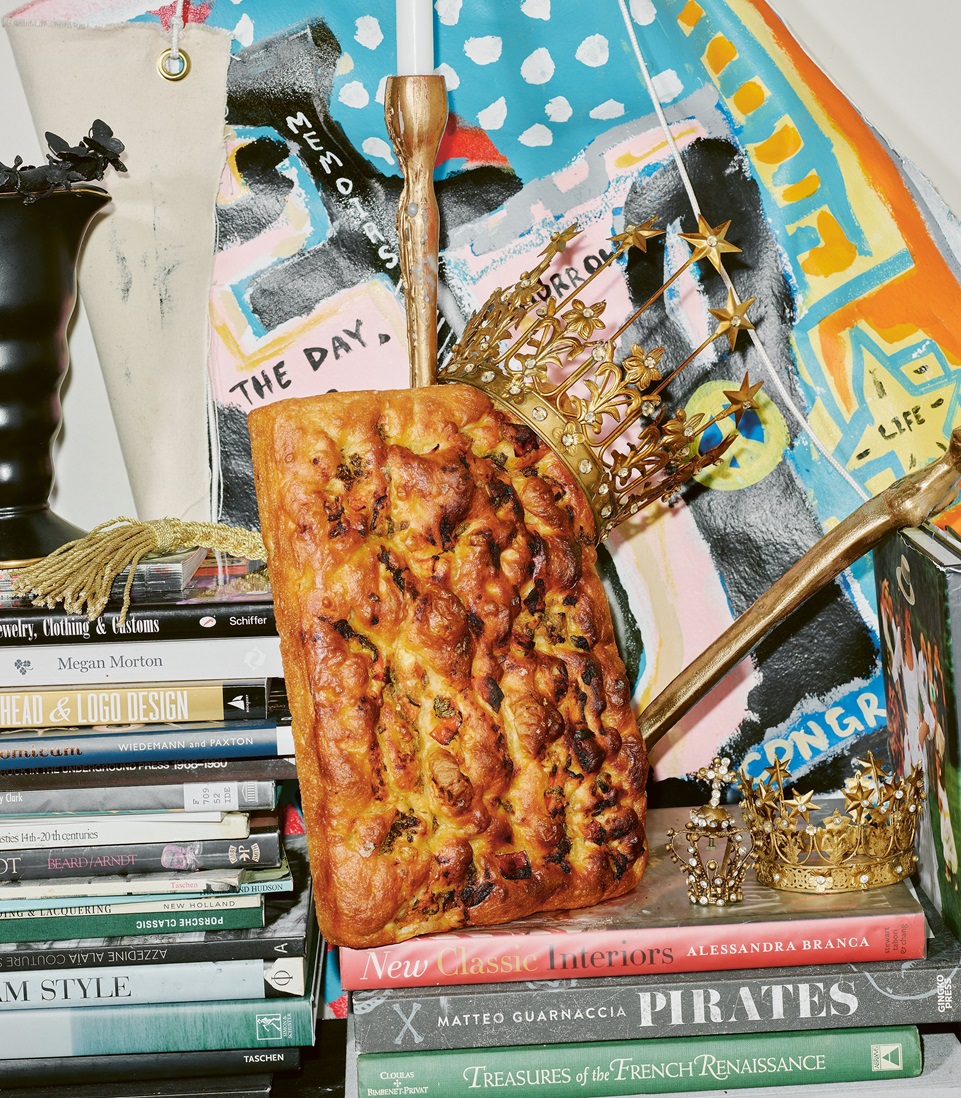 Same-day focaccia
Same-day focaccia

This is one of my most replicated recipes from social media. You can have creative freedom with the toppings. Make it as simple or intricate as you like.
Makes 1 large focaccia
Foccacia
9g dry yeast (about 2 tsp)
15g agave or sugar
625 ml (2½ cups) tepid water
160g wholemeal (whole-wheat) flour
500g (3⅓ cup) 00 flour, or plain (all-purpose) flour
20g salt
60ml (¼ cup) extra-virgin olive oil, plus extra for greasing and drizzling
My favourite topping
2 garlic cloves, peeled
250g cherry tomatoes
1 Tbsp capers, drained and rinsed
Handful of basil leaves

1 tsp salt flakes
Method
For the focaccia, whisk together the yeast, agave and water, then set aside to bloom for 10 minutes. You want the mixture to become frothy. If it doesn’t, your yeast is dead. Go buy more and start again!
Add both flours and the salt to the bowl and mix everything together with a wooden spoon or spatula until you have a rough dough.
Add the oil to another large bowl and drop in the dough. Turn it so it’s coated in the oil, then pull up from one side and bring it over to the centre. Turn the bowl and pull again. Do this four times, then flip the dough and cover with a tea (dish) towel.
Leave to prove in a warm place for at least 2 hours, or until the dough has almost doubled in size. Once proved, knock the dough back by punching the air out then repeat the folding process.
Heavily coat a high-sided baking tray with oil, then drop the dough in.
Gently stretch the dough to roughly fit the shape of the tray, then cover. Leave to prove in a warm place for 1 hour.
While the dough is proving, prepare your topping. If using my favourite topping (see ingredients), add all ingredients to a mortar and pestle and grind into a chunky pulp. This can also be done in a food processor or even by just chopping with a knife.
Once the dough has risen in the tray, pour the topping over the dough and press it all over with your fingertips. Cover and prove for a final 30 minutes.
While the dough is proving, preheat the oven to fanbake 220˚C .
The dough is ready to bake when you can see large bubbles forming on the surface.
Sprinkle with the salt flakes and bake for about 45 minutes, or until golden brown and crispy on top.
Remove from the oven and drizzle with more olive oil.
Allow to cool in the tray for 20 minutes before removing, then leave to cool to room temperature before cutting.
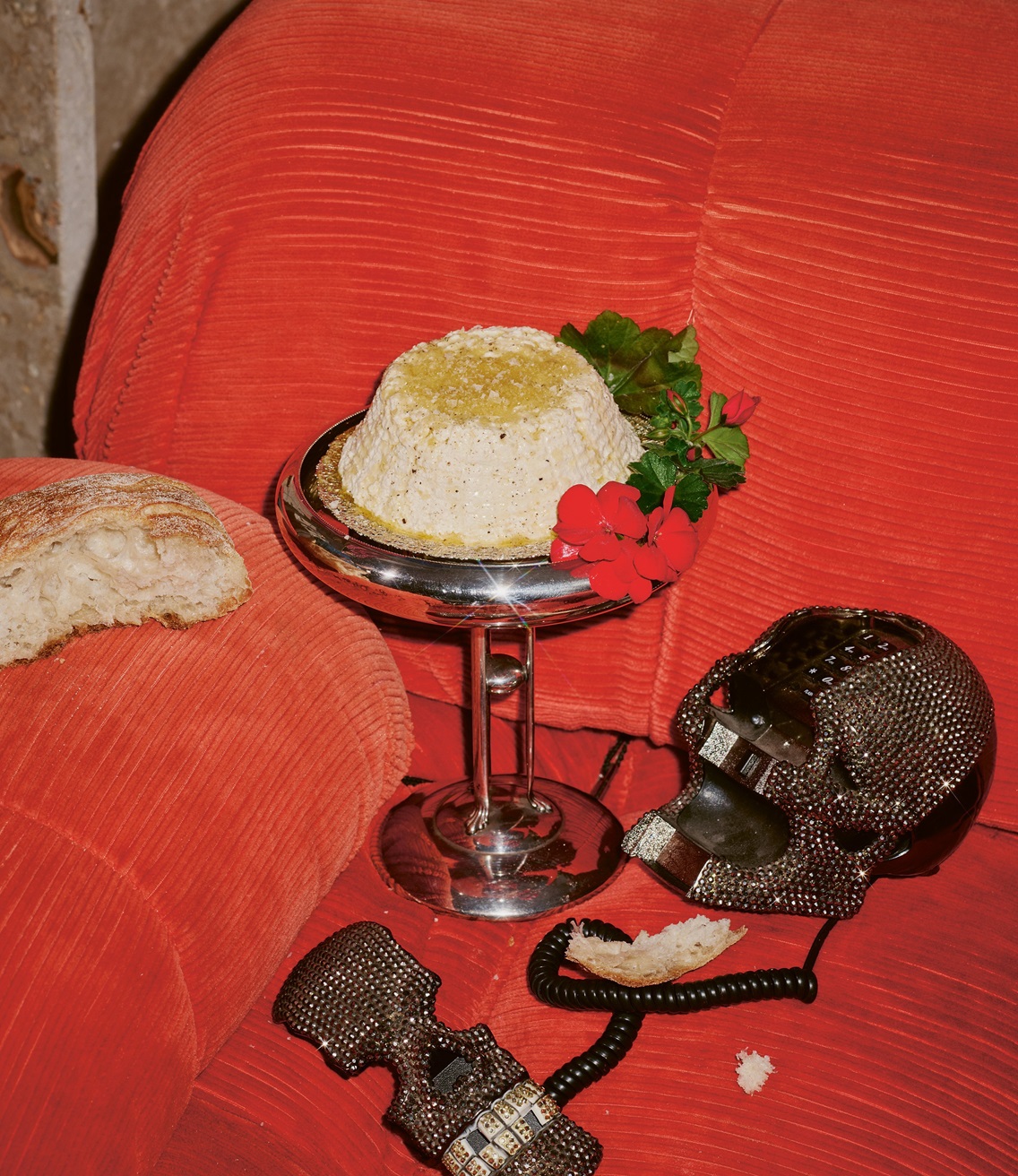 Ricotta
Ricotta

We’ve come a long way in the vegan cheese world in the past five years, but the good cheeses are still few and far between and I say that living in a major city. So, I wanted to give you a fail-safe ricotta recipe you can access 24/7 using ingredients you can even find at a service station.
Makes 1
Ingredients
1 litre (4 cups) soy milk
1 tsp salt flakes
a few cracks of white pepper
60ml (¼ cup) white wine vinegar
extra-virgin olive oil, for drizzling (optional)
sea salt flakes, to taste (optional)
Method
Heat the soy milk in a saucepan over a medium heat until bubbles begin to form around the side of the pan — don’t let it simmer or boil. Turn off the heat, add the salt and pepper and slowly pour in the vinegar.
Gently pass a spatula or spoon through the milk only a few times. Leave to sit for 1 hour.
Line a sieve with a piece of muslin (cheesecloth), or any thin cloth, and set the sieve over a bowl. Pour the milk into the sieve, then refrigerate and leave to drain for at least 12 hours, preferably overnight.
Remove the ricotta from the cloth and store in an airtight container in the fridge for up to 5 days.
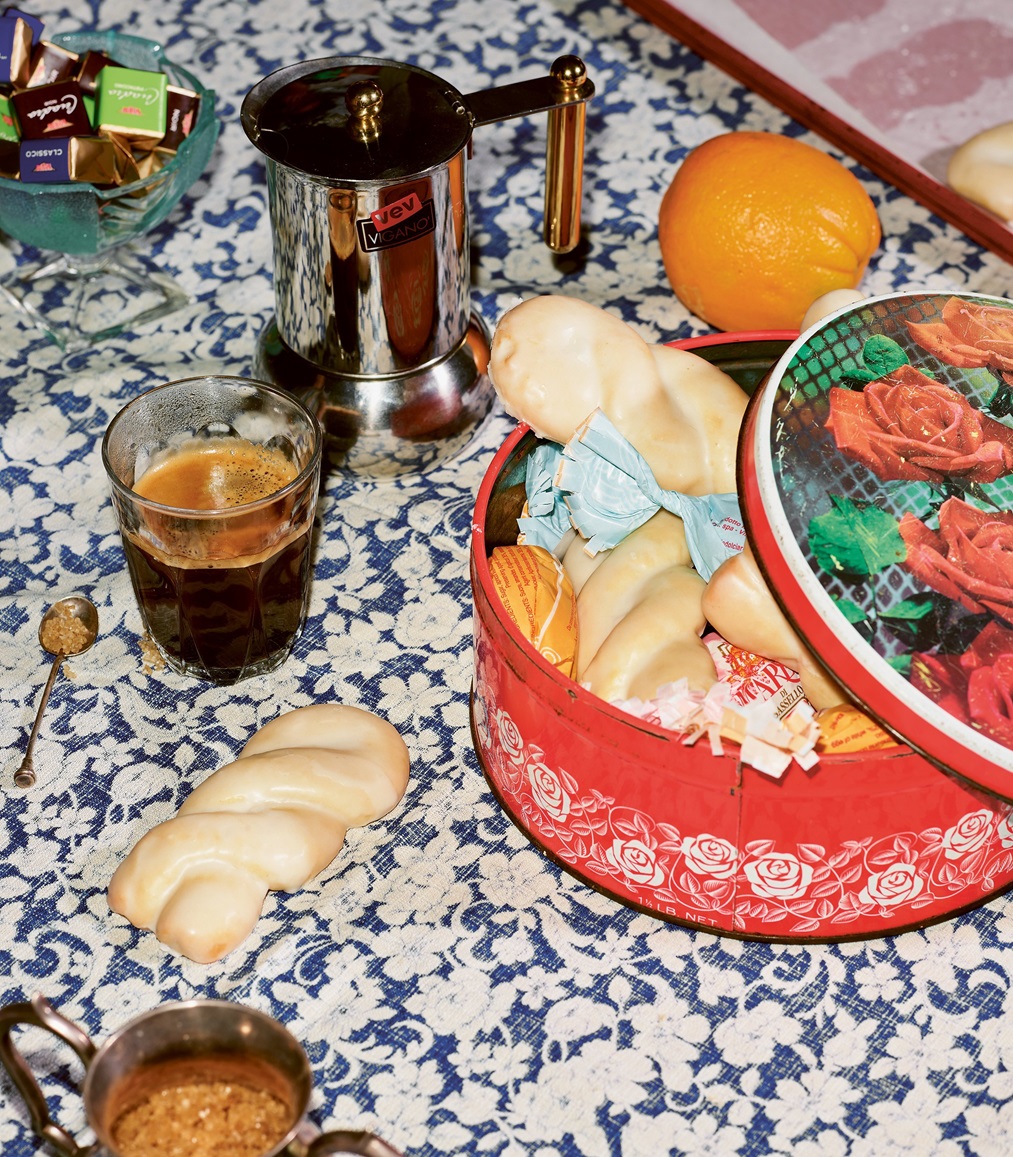 Anginetti cookies
Anginetti cookies

These cookies are the strongest memory from my childhood. I don’t know where my mum used to get them, they’d just show up. The combination of anise and lemon is just perfect.
Makes about 12
Ingredients
100g vegan butter
140g caster (superfine) sugar
10g egg replacer
35g cold water
1½ tsp vanilla extract
½-1 tsp anise extract
50g extra-virgin olive oil
40g soy milk
300 g (2 cups) plain (all-purpose) flour
½ tsp baking powder
Pinch of salt
Lemon glaze
200g icing (confectioner’s) sugar
70g lemon juice
Method
Cream the butter and sugar in a bowl with either a wooden spoon or an electric mixer until light and fluffy.
In a small bowl, combine the egg replacer with the cold water and stir well to combine.
Add the vanilla, anise, olive oil and soy milk and beat for another minute to incorporate.
Sift the flour and baking powder over the creamed butter mixture, then add the salt. Mix to combine.
The dough should be fairly soft, but not sticky. If it is, add a little more flour, 1 tablespoon at a time.
Wrap the dough in plastic wrap and refrigerate for at least 1 hour, or you can even make this the day before.
When ready to bake, preheat the oven to fanbake 160˚C .
To make the cookies, cut the dough into 12 or so evenly sized pieces, then evenly roll into 15cm ropes. Twist to form your desired shape and place on a baking tray lined with baking paper.
Bake for 10-12 minutes or until the bottoms of the cookies are very lightly golden.
Remove from the oven and allow to cool on the tray before removing.
Once the cookies have cooled, make the lemon glaze by sifting the icing sugar into a bowl and stirring through enough lemon juice to make an opaque and runny mixture.
Grab the cookies and dip the entire top of each cookie into the glaze, then place on a cooling rack, bottom side down, and allow any excess glaze to drip off. Store in an airtight container for up to one week.
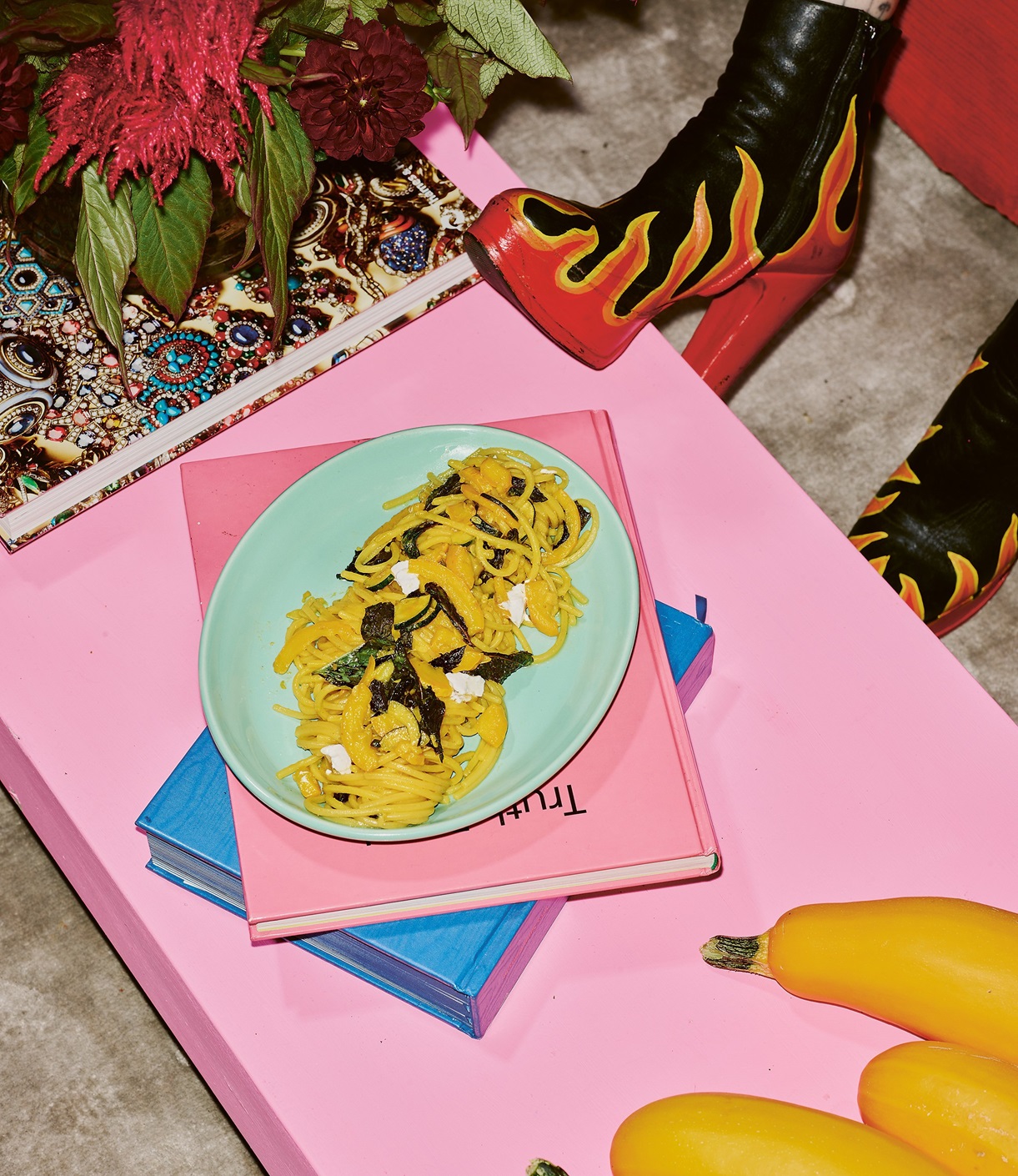 Chamomile, saffron and squash spaghettini
Chamomile, saffron and squash spaghettini

This is the best warm-weather pasta dish. When I cook it for the restaurant, I throw heaps of chamomile into the cooking water and it turns the pasta this beautiful yellow colour. This is the most delicate dish in this book and its a great way to use up all those cheap summer zucchinis.
Serves 4
Ingredients
100g vegan butter
5 chamomile tea bags, torn open and emptied (or about 15g loose-leaf tea)
500g dry spaghettini
2 tablespoons extra-virgin olive oil
1 garlic clove, finely minced
pinch of saffron threads
1 Tbsp fennel seeds, crushed
4 yellow squashes, sliced 5mm thick
2 green zucchinis (courgettes), sliced in 5mm rounds
zest and juice of ½ lemon
small handful of mint leaves
Ricotta (optional)
Method
Melt the butter in a small saucepan over a medium heat.
Add half of the chamomile tea to the melted butter and cook over a low heat for about 1 minute. Remove the pan from the heat and allow the tea to infuse in the butter for about 10 minutes.
Pour the butter through a fine-mesh sieve into a bowl. Discard the tea, reserving the butter.
Bring a large pot of water to the boil. Once boiling, add the remaining chamomile tea, turn off the heat and allow it to infuse for 5 minutes.
Using a small sieve, remove as much of the tea as possible, then heavily salt the water.
Return to the boil, then add the spaghettini and cook according to the packet instructions.
While the pasta is cooking, add the chamomile-infused butter and the olive oil to a large frying pan and warm over mediumhigh heat. Add the garlic, saffron threads and fennel seeds and cook for 1 minute before adding the squash and zucchini.
Fry, tossing often, until the vegetables are just beginning to soften.
Using a slotted pasta spoon or tongs, remove the cooked pasta directly from the pot and add it to the frying pan. Season well.
Add the lemon juice and zest to the pasta and stir through. Using a ladle, add about 125ml (½ cup) of the chamomile pasta water and quickly toss through the pasta to emulsify the sauce.
Add the mint leaves and give the pan a quick toss.
To serve, place the pasta on plates and spoon over any remaining sauce. If using the ricotta, scatter over the pasta just before serving.
Seasons - By Alison Lambert - Available for purchase now!

The Otago Daily Times and Alison have collaborated to bring you her first cookbook – Seasons.
This book is the ultimate year-round cookbook. Seasons is filled with versatile recipes designed to inspire creativity in the kitchen, offering plenty of ideas for delicious accompaniments and standout dishes that highlight the best of what each season has to offer.
$49.99 each. Purchase here.
$44.99 for ODT subscribers. Get your discount code here.







